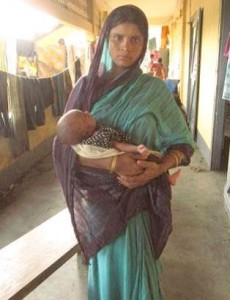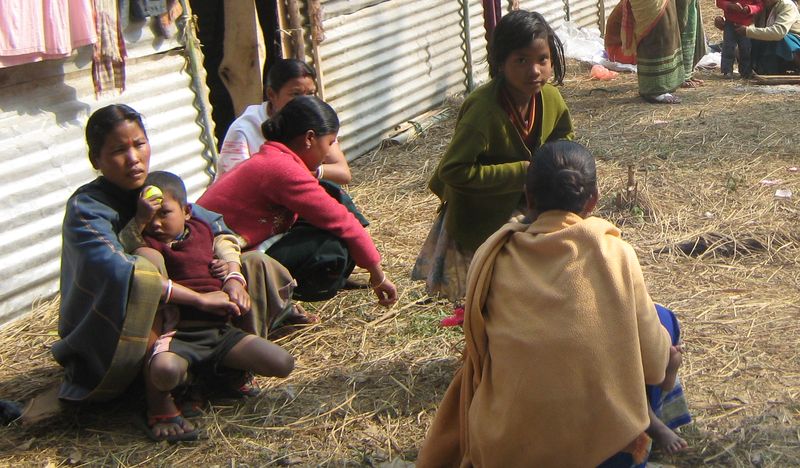As part of a series around International Women’s Day, we are publishing articles and opening up this platform to discuss and underline the specific vulnerabilities, concerns and needs of women affected by armed conflict and other situations of violence.
In this edition, we publish a piece by Dr. Ravikant Singh, President, Doctors For You, on a very critical subject — impact of armed conflict on women’s health care.
Battles are no longer fought on borders, between armies as traditional wars are being replaced by contemporary armed conflicts which betray an intensified role of non-state actors. These changed patterns of warfare have made civilians – especially women and children – even more vulnerable as they come with a new set of complexities. While on the one hand, during armed conflicts, issues ranging from resource scarcities to religious, ethnic and cultural divides make it difficult for victims to return to their homes. On the other hand, the lack of access to sexual reproductive healthcare, nutrition, WASH requirement, psychosocial support and the risk of sexual violence etc., make it even more difficult for women to stay in relief camps. In such a scenario, it becomes extremely crucial to ensure a proper mechanism to address the vulnerabilities of every woman staying in a relief camps.
Adolescent and pregnant women need special focus. For any woman, surviving these two phases in a post-conflict situation is not easy. Doctors For You (DFY) has been working for women’s healthcare in relief camps in Assam following the violence in July 2012 which led to a severe humanitarian crisis in the districts of Kokrajhar, Chirang and Dhubri of western Assam. Over four lakh people displaced within a span of one week. DFY also responded to the 2014 ethnic violence in Kokrajhar and Chirang district. Assam has over three lakh internally displaced persons. This is the largest number of conflict-induced IDPs in the world in 2014[i]. A majority of the displaced populations living in the camps are women and children as they could not flee to other safer places.
As part of the response in 2012, a joint assessment was carried out by DFY and the Tata Institute of Social Sciences (TISS),[ii] which identified that the existing vulnerabilities of women and girls of reproductive age were exacerbated in the camp-settings with limited access to environmental health, nutrition, private space, and health services. The district authority faced serious challenges in terms of responding to maternal and child health, and sexual health issues. In the aftermath of a conflict, there are always barriers between camp dwellers and health care services and other service providers in terms of accessibility.
With an estimated[iii] 4,000 pregnant women in relief camps and only 117 doctors, the reproductive health scenario was highly challenged. Immediate action was taken by the authorities in terms of deployment of doctors to conduct health camps. However, underlying factors such as privacy for ANC check-up, absence of female doctors, along with cultural beliefs regarding immunisation and institutional deliveries, substantially lowered the health-seeking behaviour among pregnant women, lactating mothers and their families.[iv]

A woman in Kokrajhar district who gave birth in the relief camp. A number of deliveries were reported to have taken place in corridors, staircases or en-route to a health centre.
As per the statistical data recorded by NRHM Assam, the number of institutional deliveries in Kokrajhar and Chirang district substantially decreased by 6.045% and 2.05%, respectively, in 2012-2013[v]. This shows the increased risk of maternal and child mortality. In the 40 camps visited by DFY-TISS team, there had been 135 deliveries from August-September, out of which 43 had been in camps. There had also been 10 neonatal deaths and two maternal deaths in the two months. Most deliveries in the camps took place with the help of midwives (Dai). Additionally, since a majority of the identified pregnant cases were multipara, the time period between start of labour and delivery was very less. Because of this, a number of deliveries were reported to have happened in corridors, staircases or en-route to a health centre. Likewise, the sanitary and hygiene needs of the adolescent girls also remained unmet, exposing them to high risk of infection and other diseases.
Similarly, in any post disaster situation, especially in armed conflicts, women are at higher risk in terms of safety, security and privacy. In case of the Assam violence in 2012, more than 270 relief camps (temporary tents and schools) were providing shelter to thousands of inhabitants and privacy was one of the least addressed issues. Even lactating mothers had no private spaces to breastfeed their babies. Women lived under the fear of sexual and gender-based violence, unwanted pregnancy, unsafe abortion, sexually-transmitted infections, and even trafficking leading to slavery and enforced prostitution. The responsibility of collecting water and fuel for cooking, often from far-off places, puts women at higher risk. Relief camps have no provision for separate shelter or separate toilets for men and women. Along with these, inadequate or lacking lighting facilities are common factors in the relief camps leading to increased apprehension of sexual violence and other crimes. Additionally, discrimination and exploitation during the registration process and relief distribution has also been noted.
Migration and displacement are unavoidable consequences in situations of armed violence. During the 2012 conflict situation, the Crime Investigation Department had warned four district administrations about the potential threat of human trafficking for the displaced population[vi]. Along with security concerns, the factors that leave women in camps with inevitable psychological affect are loss of life, separation from family, damage of property, etc.
In order to enable a priority set of activities dealing with reproductive and sexual health care services for women living in the camps DFY also launched the Minimum Initial Service Package (MISP)[vii] project in 2012. It benefited 1066 pregnant women. The MISP contained clean delivery kits, anti-natal care kits, RTI/STI kits, family planning kits and menstrual hygiene kits. It is universally believed that if implemented at the onset of any disaster, including armed conflicts, MISP can prevent death and disability, particularly among women and girls.
It is clear from the field experiences that it is extremely crucial to ensure that proper channels are followed to guarantee the safety and security of women as they have different physical and social requirements. It is highly essential to design proper guidelines for setting up the relief camps and ensuring appropriate access to water, food, shelter and healthcare.
[i] http://www.thehindu.com/news/national/other-states/assam-has-worlds-highest-number-of-people-internally-displaced-by-conflict/article6748443.ece
[ii] http://doctorsforyou.org/
[iii] Reuters, 6th August 2012, Fleeing violence, Assam’s displaced face disease, death in camps
[iv] ICSSR Baseline Survey of Minority Concentrated Districts (Chirang, Dhubri, Kokrajhar)
[v] www.nrhmassam.in/institutinal_delivery.php
[vi] www.telegraphindia.com/1140512/jsp/frontpage/story_18332137.jsp
Assisted by Ms Barnali Singha & Ms Priyadarshani Rawal from Doctors For You.


